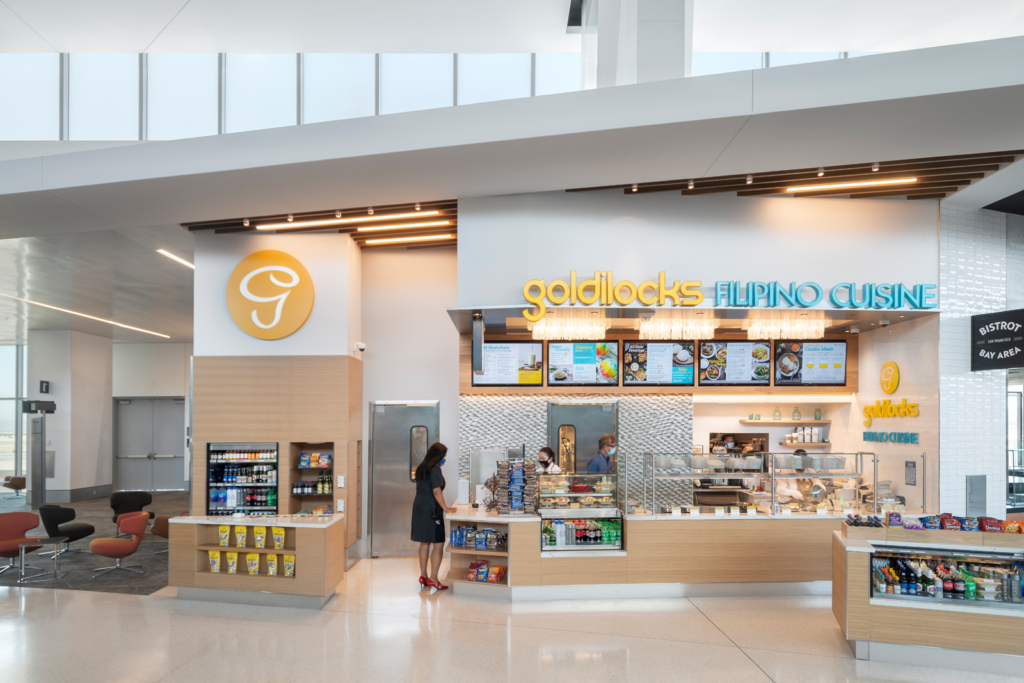How are architects and designers creating new airport experiences? How is San Francisco International Airport (SFO) leading the way? What’s the future of airports in the age of a global pandemic? William Duff answered these questions and more in a panel discussion co-presented by AIA San Francisco and the Center for Architecture + Design, for their 17th annual Architecture + the City series. Moderated by broadcast journalist Sydnie Kohara, William was joined by panelists Ryan Fetters, RA, LEED AP, principal and design director, Gensler, and Katy Mercer, IIDA, principal and regional interior design leader, Woods Bagot.
Creating Airport Experiences
Airports are among the most complex building typologies which over the decades have become nearly self-contained mini cities. In its 93-year history, SFO has evolved from what was originally planned as a temporary, experimental airport in 1927 to the largest airport in the San Francisco Bay Area.
Here at WDA, our focus is on the amenity spaces people interact with – restaurants, retail stores and lounges – creating a highly curated experience from curbside to gate-side. We collaborate closely with the base building design and airport design review committee (DRC) to provide a competitive design for our clients and meet the airport’s overall vision. “Imagine you are building a retail store within a highly secured space, on top of a complex building with intense people movement and luggage systems. Our spaces need to fit in this complex and curated environment. This gives an insight into the complexity of what we do”, explained William Duff.

SFO Leading the Way
A facility that is expected to last and adapt over decades, SFO ensures resiliency by focusing on responsible design. Sustainable initiatives, flexible real estate and state-of-the art technology are all keys for passenger comfort and overall longevity. Access to natural daylight and the outdoors are growing trends too, enhancing passenger wellness.
Allowing for a variety of retail and restaurant experiences also makes SFO unique. Retail is different in an airport setting than on a Main Street environment. Duff noted that the airport controls the mix of tenants to limit competition between similar tenants and offer the customer a variety of experiences. “The mix of tenants at SFO is highly curated, and the airport’s focus is on balancing the amenities that are offered to the passengers. At the end of the day passenger comfort and satisfaction is the goal” notes William.
The airport offers prospective tenants a unique pop-up program for new or emerging retailers. William noted “this is a great program to lower barriers of access to becoming a tenant and give a broader mix of tenants for the airport to ‘test drive’. Once tenants succeed and graduate, WDA can help them design and develop their permanent space.”

The Future of Airports
“One way to understand the future is to look at the past” says William. “Pre 9/11, there was a small number of retail tenants typically in airports. Pittsburg International Airport was a ground breaker in bringing the Main Street experience to the airport. Post 9/11, with increased security and wait times, better amenities can provide better service.”
The new airport model enables passengers to experience a region or city through its unique offerings that showcase local culture and art, like SFO’s practice of shepherding local. William noted “when I travel to international destinations, the experiences I seek out offer local, unique retailers and restaurants, representing their region.”
The current pandemic has accelerated technologies and trends such as contactless purchasing at the airport. The open design of tenant spaces removes barriers between restaurants and the terminal offering a more continuous experience.

Key Takeaways
- Facilities need to accommodate long wait times by enhancing passenger amenities from drop-off to gate.
- The airport is a complex environment to build within. Close collaboration and strong relationships between designers, tenants and the airport will ensure a successful project completion.
- Provide wellness and comfort by integrating daylight and nature into space design. Once inward facing, amenities are now providing more connections to outdoors with views of the tarmac and access to outdoor spaces.
- Airports are becoming a destination and gateway to cities and regions around the world. Showcasing local food and culture allows travelers to experience a region and promotes local businesses.
By Steven Lovell, AIA
Contributors: William Duff, AIA, LEED AP; Sarah Mergy; Wendy Osaki; Brenna Daugherty
